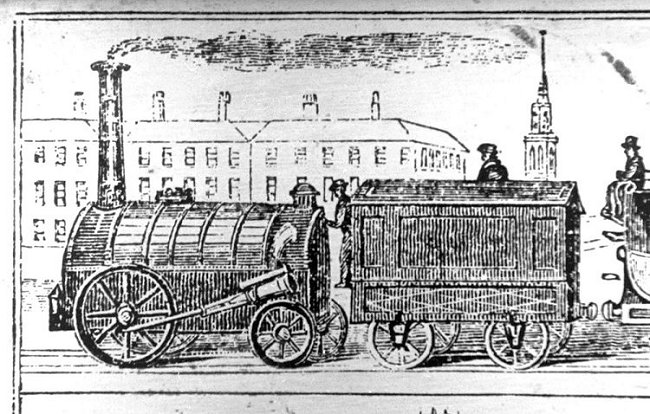|
|
|
|
|
Part 1 Part 2 Part 3 LBR Plaque (this page) 
This etched copper plaque is titled "The London & Birmingham Railway Coaches 1837". It was bought second-hand many years ago and its origins are unknown. 
Line 1 item 1. The locomotive is something of a mystery, as it appears there were no locomotives of this type, an 0-2-2 of Stephenson design, on the LBR. It looks similar to the "Northumbrian" of the Liverpool & Manchester Railway. 
Line 1 item 2. This early first class passenger carriage appears to be effectively three stage coach bodies mounted on a railway frame. As with stagecoaches, the luggage was placed on the roof.. 
Line 1 item3. Another first class carriage. The spokes on the wheels of the first class carriages in this train are depicted as being straight, very unlike the spokes depicted on the wheels of the second class carriages. 
Line 1 item 4. Those who wished to take their road coach with them for use at the other end of the rail journey travelled in their own coach loaded onto a carriage truck, which consisted of a carriage chassis. The etching does not appear to show any method of securing the coach to the carriage truck for the journey. 
Line 2 item 1. This second class carriage looks externally to be similar to the first class carriages, so the difference between the classes was presumably in the upholstery. 
Line 2 item 2. This second class carriage appears to be a development beyond the concept of mounting three road coach bodies on a railway chassis. The permanently open windows may have been desirable on hot summer days, but would have been uncomfortable at other times.
|
|
Home > Early Railways | Contact Us |
|
|









